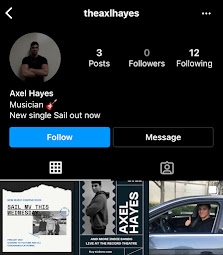In a recent blog post, I make mention of all the trials and tribulations that I faced as I wrote the first draft of the script. In it, I state that I want to keep the conversation between Joseph and Father Peter, yet I need to edit it down as it will take up way too much time in the final piece. Additionally, I wrote that I was at a loss on how to end the production. Both of these were problems that I was struggling to solve.
After giving it some thought, I'll be removing the conversation between the two characters, and instead making the entire production surround Joseph and his internal dialogue. Although it pains me to do so, I came to this conclusion for a plethora of reasons:
- Location scouting!!! For Father Peter's office, I would need a semi-large, 4-walled room with a desk, shelves, decor, props, and crosses. Although I'm willing to compromise on a lot of things, I would still need it to look like a semi-believable office, and I simply don't know where I would film this. Although I considered renting an office room for a day, I would need to bring in props and hang crosses on the walls, which is too much of a hassle. By removing this scene, I'm also removing the problem.
- Acting. When including a dialogue scene between two characters, I feel like the acting is just as important as the writing. I don't consider myself to be a bad writer, but, it being one of my first times ever writing dialogue, I'm definitely not confident in my abilities. Now, adding on to that the fact that none of my actors have ever done this before, I believe that I'm taking on too many risk-factors at once.
- And, finally, the scene is too long. I tried cutting it down, but when I do, I end up just adding more. I'm already dealing with a very short amount of allotted time, and, at the risk of it sounding rushed and half-developed, I don't want to shorten the dialogue any more than it already is.
Having considered these points, it left me with no doubt that I would need to get rid of this scene. However, being a little too attached to this idea, I came up with a way that I can still incorporate the priest. As previously mentioned, I was on the hunt for ways to end my production. I wanted the end to shock the audience, and provide a sort of lightbulb moment.
I've decided that the last scene will be a shot of the counselor's door opening, revealing a smiling priest who greets Joseph before telling him to come in. I want the ending to be clear, yet I don't want to explicitly state it to the audience; I want them to work for their meal. Throughout the production, Joseph's internal monologue will represent the struggle that he is dealing with when faced with his religion and his sexuality. Yet, at no point will I mention conversion therapy. In the end, when the audience is face-to-face with a man wearing full preacher attire who is welcoming Joseph into his office, the two will be connected.
However, discarding the conversation scene and replacing it with monologue also brings with it its own set of issues. For example:
- My production is now too short. I would need to add 1:30 minutes worth of additional writing, which might bore my audience, or just end up sounding phony. After all, I can only be philosophical for a limited amount of time.
- Considering I do expand on Joseph's monologue (which I most likely will), I would need B-roll footage to juxtapose the voice-over. Here, I'm at a loss for what I could film. If the production begins with him at church and ends with him at the counselor's office, should the middle be the realistic in-between time, or should it be flashbacks?
- I still have no idea how good of an actor my friend Joey is. I want the character of Joseph to sound pained, betrayed, and carrying emotional baggage, so I'm a bit worried considering that Joey sounds like a Californian surfer bro.
Regardless, this seems like the best course of action. Having taken so long to decide on the final plot progression, I seem to have fallen behind. This following week I plan to write the final draft of the script, so I can move on to storyboarding, finalizing the cast, scouting locations, and working on the shooting schedule. Until next time!














